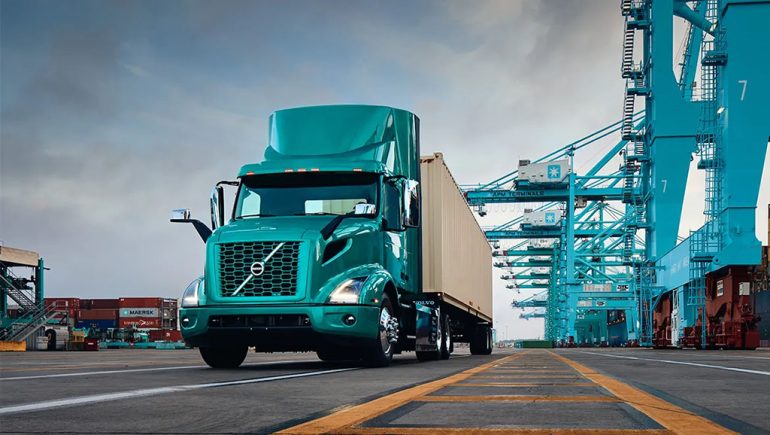New 25% Tariff On Imported Medium And Heavy Vehicles Begins November 1 : Automotive Addicts
Automotive

A giant shakeup simply landed within the business truck world. President Donald Trump says the USA will impose a 25 % tariff on all imported medium and heavy obligation vans beginning November 1, 2025. The purpose, in keeping with the administration, is to defend home producers from overseas competitors and encourage extra manufacturing inside U.S. borders.
Should you promote or purchase Class 4 by way of Class 8 vans, this isn’t background noise. It touches all the pieces from municipal fleets and last-mile supply outfits to long-haul carriers and development firms. It additionally ripples by way of suppliers, sellers, and secondary markets the place used values and lead instances usually react shortly to coverage shocks.
Here’s what is altering and why it issues.
The administration frames the tariff as a win for American nameplates that dominate the heavy aspect of the market. Assume Paccar’s Peterbilt and Kenworth in addition to Daimler Truck’s Freightliner. These manufacturers already assemble most of their U.S. quantity domestically, however they compete in opposition to imported fashions and gliders that may undercut on value when change charges and labor arbitrage line up. A blanket 25 % levy adjustments that math in a single day.
Part 232 and the nationwide safety hook
The tariff follows a Commerce Division investigation below Part 232, the statute usually used to justify duties on nationwide safety grounds. The main points of the ultimate rule and any carve-outs are nonetheless coming into view. What fleets ought to watch carefully is how the administration defines coated automobiles, how customs classifies incomplete chassis, and whether or not vocational our bodies delivered on imported frames fall inside the similar tariff bucket.
Underneath the USMCA, medium and heavy obligation vans can transfer tariff free in the event that they fulfill strict regional worth content material guidelines. In follow, meaning at the very least 64 % of a heavy truck’s worth should originate in North America by way of engines, axles, aluminum and metal inputs, or meeting labor. The brand new tariff raises a key query. Will qualifying USMCA vans stay exempt, or does the blanket 25 % price override these preferences for accomplished automobiles arriving from Canada and Mexico that don’t meet the content material threshold on a line-by-line foundation
Mexico is the biggest exporter of medium and heavy vans to the USA. Import volumes from Mexico have roughly tripled since 2019 to the neighborhood of 340,000 items. Suppliers and closing meeting operations south of the border are deeply intertwined with U.S. crops, and Mexico argues that its exported vans common about 50 % U.S. content material. That integration means a tariff doesn’t solely hit a overseas competitor. It could actually additionally boomerang throughout a North American provide chain that shares powertrains, frames, electronics, and labor throughout borders.
Stellantis builds some heavy obligation Ram pickups and business vans in Mexico. The corporate has lobbied in opposition to steep, broad tariffs that may sweep in its Mexican-built vans. Volvo Group is investing closely in a brand new heavy truck plant close to Monterrey that’s deliberate to come back on-line in 2026 to help Volvo Vehicles and Mack. Insurance policies that carry landed prices on Mexican-assembled items might push timing, sourcing, or allocation selections as that undertaking ramps.
The U.S. Chamber of Commerce and business teams are urging restraint. Their argument is simple. The highest import sources for these automobiles are U.S. allies resembling Mexico, Canada, Japan, Germany, and Finland, and people flows don’t pose a nationwide safety menace. They warn {that a} broad tariff might elevate prices for American companies, governments, and in the end customers who depend on trucking for all the pieces from meals to constructing supplies.
The tariff is an enormous lever pulled on quick discover and it introduces actual uncertainty right into a section that lives on tight margins and lengthy planning cycles. Whether or not it in the end brings extra North American content material and meeting or just provides friction and price will hinge on the ultimate rule language, any exemptions for USMCA-compliant automobiles, and the way buying and selling companions reply. For now, fleets that plan shortly and doc their sourcing will likely be greatest positioned to navigate the November 1 change.
FOLLOW US TODAY:

Lloyd Tobias is a seasoned automotive journalist and passionate fanatic with over 15 years of expertise immersed on this planet of vehicles. Whether or not it’s exploring the newest developments in automotive know-how or conserving an in depth pulse on breaking business information, Lloyd brings a pointy perspective and a deep appreciation for all issues automotive. His writing blends technical perception with real-world enthusiasm, making his contributions each informative and fascinating for readers who share his love for the drive. When he’s not behind the keyboard or below the hood, Lloyd enjoys check driving the latest fashions and staying forward of the curve in an ever-evolving automotive panorama.






